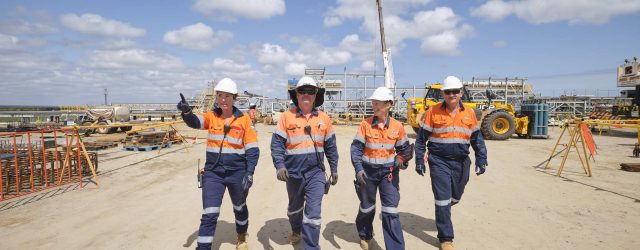Should Cost – why it unlocks a more effective way to deliver
Posted: 28th October 2022
Posted in: Blog

Posted: 28th October 2022
Posted in: Blog
Infrastructure delivery is held back by its traditional tendency to see value as the tendered capital cost for a defined solution.
Our industry is inherently fixed on the process of defining scope and then tendering the scope for price and partner.
Traditional procurement processes require a scope to be defined to a sufficient degree that prices can be obtained – and then a cascade of that process through the supply chain. This means there is limited ability for those delivering a project to engage on scope, and thereby drive better outcomes and redefine cost.
This approach is not fit for purpose. The disparity between tendered and outturn costs is widely acknowledged. Globally 3 out of every 4 projects are delivered outside the tendered cost. Further, it is this traditional approach that underpins the sustainability crisis our industry faces. In other words – it’s not working for anyone.
On many projects the wider supply chain isn’t involved until the construction phase, by when there is little opportunity to add any real value. This is an ineffective way to engage with the supply chain, and one that fails to leverage the capability of these partners to contribute value.
Best practice projects are demonstrating that applying a broader value for money framework, and within that using a ‘should cost’ processes to define affordability envelopes, enables a more progressive way of engaging and leveraging partner capability.
Better defining value for money
The starting point for this change is a more effective value for money framework, recognising that value is how effectively, efficiently and economically we procure and deliver. Defining and managing value for money requires an understanding of a project across these three dimensions:
This approach is advocated across a range of recent industry reports and has been applied on numerous best practice examples. Infrastructure Australia’s Delivering Outcomes report advocates a focus on outcomes and the use of Should-Cost models – as does the recently updated UK Construction Playbook.
The Project 13 adopter community provides numerous examples of infrastructure owners putting outcomes and Should-Cost at the core of their delivery models and realising the benefits of more integrated arrangements. These adopters are underpinning their projects by creating a golden thread that aligns all contributors with the required outcomes and affordability.
Avista Strategy is working with a number of leading Australian asset owners to establish this approach on key projects and programs. In these cases, it is already clear how the change enables more effective engagement and delivery.
Applying Should-Cost Models
Infrastructure owners are increasingly focusing on required outcomes and underpinning the interventions to realise them through Should-Cost models. They are doing this by using cost intelligence and benchmarks to define what good looks like – and then incentivising partners to perform against that Should-Cost.
Refocusing on outcomes and using Should-Cost models is a key enabler of industry change. If infrastructure continues to use competition against owner defined scope to determine value, it is very difficult to make the shift to more integrated, collaborative arrangements.
“Having a clear understanding of the whole life costs of delivering a project or programme is best achieved by producing a Should Cost Model (SCM). A SCM provides a forecast of what a project or programme ‘should’ cost over its whole life, All projects and programmes should produce a SCM.. This will inform engagement with bidders and the appropriate commercial strategy including methods to incentivise the supply chain.”
A Should-Cost is defined by using historic baselines and benchmarks to establish an affordability envelope for an outcome. There are several ways to define a Should-Cost, depending on the nature of the program and the maturity of the cost base.
Some owners have a well-established asset cost data allowing an internal benchmark for delivering the required Outcomes to be developed. Other clients may use a multi-stage process to supplement cost base understanding with external benchmarks and market intelligence. However, the key principle remains the same, value is defined pre-solution by applying cost intelligence to establish a Should-Cost for the Outcomes required.
This feeds directly into commercial models. The Should-Cost is translated into an affordability envelope for the project, with commercial thresholds developed to align and incentivise partners. In many cases this includes commercial arrangements where partners generate a return by delivering the required Outcomes within the given affordability thresholds – by delivering within historic baselines.
This is a challenging shift. It requires asset owners to change their traditional approach to procurement. Owners who can clearly articulate the Outcomes they require and can establish a cost base process that supports Should-Cost modelling, can implement integrated and incentivised models.
This shift enables the more integrated and collaborative approach that industry has been calling for. It means partners can be selected on a capability basis pre-solution development, their capability and that of the strategic suppliers can influence solutions and add greater value. It means integrated delivery teams can be brought together much earlier – and because they are engaged to deliver Outcomes it means they can take a systems perspective rather than a siloed project perspective.
Experience across a range of best practice examples is demonstrating that a clear Value for Money framework and the use of Should-Cost models provides a route to more productive and sustainable infrastructure delivery.